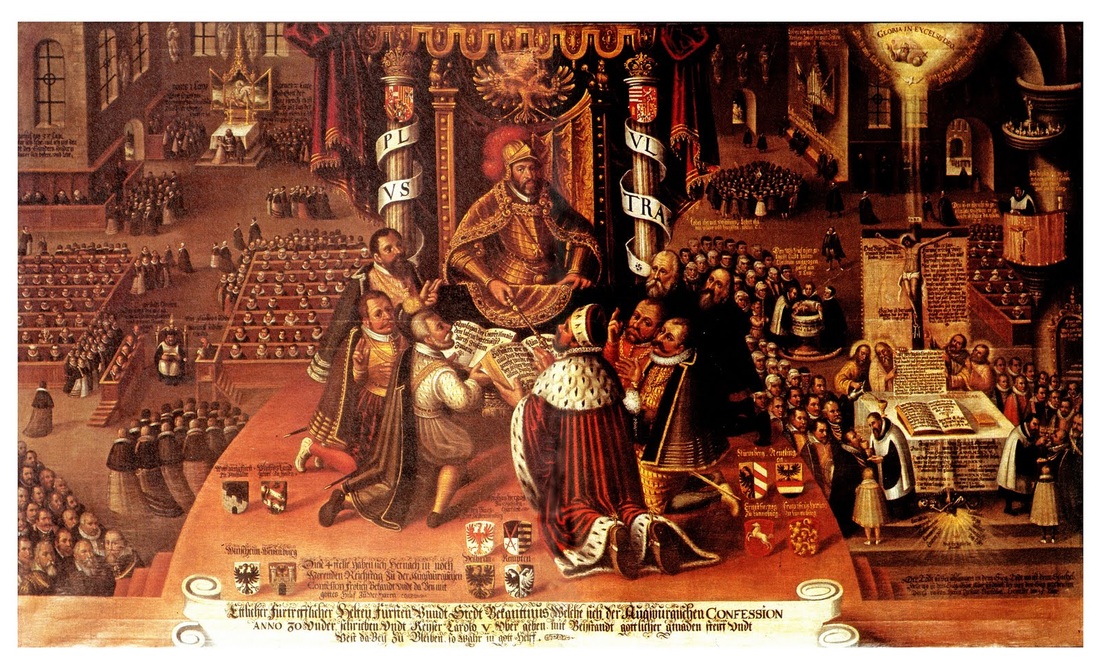A Historical Turning Point: The Augsburg Treaty

In 1555, a significant event took place in the heart of Europe, marking a pivotal moment in the history of religious and political tensions. The Augsburg Treaty, also known as the Peace of Augsburg, stands as a landmark agreement that shaped the course of Western civilization. This treaty, crafted with careful diplomacy, aimed to bring stability to a region torn apart by religious conflict. Let us delve into the intricacies of this historic accord and explore its enduring impact.
The Prelude to Peace

The sixteenth century was a tumultuous era, witnessing the emergence of the Protestant Reformation, a movement that challenged the authority of the Catholic Church and sparked religious divisions across Europe. The Holy Roman Empire, a complex political entity encompassing much of modern-day Germany, found itself at the epicenter of these religious tensions. As Protestant beliefs spread, the empire became a battleground for conflicting ideologies, leading to a series of wars and conflicts known as the German Peasants’ War and the Schmalkaldic War.
It was against this backdrop of religious strife and political instability that the Holy Roman Emperor, Charles V, sought a resolution. Recognizing the need for a lasting peace, he convened a gathering of imperial estates in the city of Augsburg, a strategic location within the empire. Here, representatives from various states, cities, and religious groups came together to negotiate a treaty that would address the pressing issues of the time.
The Terms of the Treaty

The Augsburg Treaty, signed on September 25, 1555, established a principle known as “cuius regio, eius religio,” which translates to “whose realm, his religion.” This principle became the cornerstone of religious policy in the Holy Roman Empire. According to this agreement, each prince or ruler within the empire had the authority to determine the religion of their territory, either Catholic or Lutheran (Protestant). This meant that individuals were expected to adhere to the faith chosen by their ruler, a concept known as “territoriality.”
Additionally, the treaty granted certain protections to the Protestant faith. It recognized the Lutheran Church as a legitimate religious denomination, allowing its adherents to practice their faith without fear of persecution. This marked a significant departure from the Catholic Church’s initial response to the Reformation, which had often involved harsh suppression of dissenting beliefs.
Impact and Legacy
The Augsburg Treaty had far-reaching consequences, both within the Holy Roman Empire and beyond. Firstly, it brought a measure of religious peace to the empire, allowing different faiths to coexist within its borders. This stability enabled the empire to focus on other political and economic matters, fostering a period of growth and development.
However, the treaty also had its limitations. It failed to address the concerns of other emerging Protestant denominations, such as Calvinism, which continued to face opposition and persecution in some regions. Furthermore, the principle of territoriality created a fragmented religious landscape, with different faiths dominating specific territories. This led to ongoing tensions and conflicts, particularly in regions where religious borders intersected.
Despite its shortcomings, the Augsburg Treaty remains a significant milestone in European history. It represented a crucial step towards religious tolerance and the recognition of diverse beliefs. The treaty’s principles influenced subsequent religious policies and served as a model for future negotiations and agreements.
The Augsburg Treaty and the Concept of Religious Freedom
The Augsburg Treaty’s impact extends beyond its immediate context. It played a pivotal role in shaping the concept of religious freedom, a principle that would later become a cornerstone of democratic societies. The idea that individuals should have the right to choose their faith and practice it freely gained momentum in the centuries that followed.
The treaty’s recognition of Lutheranism as a legitimate religion set a precedent for the acceptance of other dissenting beliefs. Over time, the struggle for religious freedom intensified, leading to the emergence of new movements and the establishment of more inclusive religious policies.
Modern Relevance

While the Augsburg Treaty was crafted in a specific historical context, its principles and legacy continue to resonate in the modern world. In an era where religious diversity and tolerance are paramount, the treaty serves as a reminder of the challenges and achievements of the past. It highlights the importance of dialogue, negotiation, and the recognition of different faiths as essential components of a peaceful society.
Conclusion
The Augsburg Treaty stands as a testament to the power of diplomacy and the pursuit of peace in the face of religious conflict. Though imperfect, it laid the foundation for a more tolerant and diverse Europe. Its impact on religious freedom and the recognition of different beliefs continues to influence our understanding of human rights and societal harmony. As we reflect on this historical turning point, we are reminded of the enduring importance of dialogue and compromise in shaping a better world.



